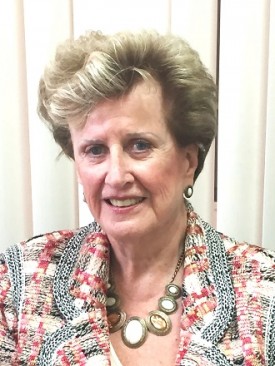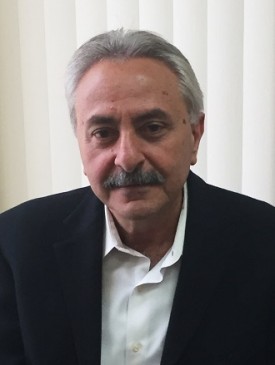Health Centers Use Business Tactics to Compete with Private Orgs
New Jersey’s largest federally qualified health center system is using business strategies, like customer service and diversification, to combat rising competition from private organizations.

Source: Thinkstock
- Federally qualified health centers (FQHCs) are the backbone of the healthcare safety net. But rising competition from hospitals and other healthcare organizations may be the straw that breaks that back.
FHQCs receive enhanced Medicare and Medicaid reimbursement, as well as funding from the Health Resources and Service Administration (HRSA), in exchange for providing comprehensive health services to underserved patient populations.
As a result, community health centers primarily treat Medicaid and uninsured individuals. About one-half of all patients who walked through FQHC doors in 2015 were covered by Medicaid and another 24 percent were uninsured, reported the Henry J. Kaiser Family Foundation.
But as individuals gain more health coverage options, especially in Medicaid expansion states, hospitals and for-profit healthcare organizations are looking to draw in more Medicaid beneficiaries.
The issue of rising competition is threatening the financial stability of many health centers, even at North Hudson Community Action Corporation, the largest FHQC system in New Jersey.

READ MORE: Health Centers Face Post-ACA Revenue Cycle Management Issues
“Many of them [private, larger healthcare organizations] would not accept Medicaid patients several years ago,” the FQHC’s President and CEO Joan Quigley recently explained to RevCycleIntelligence.com. “But since New Jersey was one of the states that expanded Medicaid, now there are so many patients with Medicaid and the reimbursement even for private practices is a little bit better, suddenly those patients are welcome in the private practices.”
Hospitals and for-profit organizations are not only competing for patients, but also physicians, she added.
“One of the pieces of competition that we’re facing comes from hospitals, but in an unusual way,” she stated. “Like all the FQHCs in our area, we’re experiencing a doctor shortage problem. Ten years ago, a primary care doctor or family practice doctor who didn’t want to be on call 24/7 would come to an FQHC or a similar program where they could work set hours. They didn’t have the option to do that in hospitals.”
However, hospitals are increasingly employing hospitalists who work set shifts, rather than continuous on-call times.
“They only see the patients while they’re lying down in the hospital. When they go home those doctors never see those patients again,” she elaborated. “It’s an easy way to practice medicine and it’s becoming competition for us in recruiting providers.”
READ MORE: What Is Healthcare Revenue Cycle Management?
Increased competition that wasn’t there before has forced FHQCs to start acting more like businesses than non-profit health centers, North Hudson Community Action Corporation’s CFO Michael Shababb stated.

“It is a battle every day as we try to operate the health center as a business,” he said. “Even though we’re a non-profit, we try to operate as if we were a profitmaking company. By that I mean there’s an opportunity to make some money, a surplus, invest it back into the health center, back into the staff for raises or improve the health insurance or supplies or whatever.”
“There’s also the opportunity to lose money,” he added. “If you lose money then you’re going to be out of business and not be able to provide any services. It’s a fine line to walk.”
Many FQHC leaders are not sure if their organization has the business capabilities to fall on the surplus side of that line. A recent Sage Growth Partners survey found that 56 percent of FQHC CEOs found financial sustainability to be moderately or extremely challenging and 53 percent stated that revenue diversification was an issue.
Profit was also one of the least tracked revenue cycle metrics at FQHCs, the survey found.
READ MORE: Maximizing Revenue Through Clinical Documentation Improvement
Despite financial and revenue cycle management challenges, North Hudson Community Action Corporation FQHCs are finding that their role as community health and social services centers are helping to retain patients.
North Hudson Community Action Corporation started in 1965 as a social service agency and expanded into healthcare about 22 years ago. Their roots in social service enables the centers to provide more comprehensive care for underserved and socioeconomically disadvantaged patients.
“We don’t only ask, ‘How are you feeling?’ We can also ask, ‘Do you have a job? How is your home life? Do you need assistance with your landlord or immigration?’ We give pretty well-rounded services,” Quigley said, referring to the FQHC’s in-house social agencies, job counseling, and emergency assistance programs.
Medicaid and previously uninsured patients who started to see providers in practice practices did not always receive the same type of comprehensive care.
“We lost patients for a while. But then they come back to us finding that the services they were getting from the private doctors were not quite as good as they expected,” she said. “We do more, but also they expected to find red carpets all over the private doctor’s offices and that doesn’t happen.”
To remain competitive in their market, North Hudson Community Action Corporation leaders also set their sight on diversifying its business.
Shababb explained that the FQHC system is now contracting with specialists to diversify the organization’s payer mix. The organization also purchased a private dental practice that has about 95 percent commercially insured patients.
“We felt that this was a good investment on our part in order to diversify and not put all our eggs in one basket,” he said.
North Hudson Community Action Corporation also overcame financial challenges by engaging in value-based purchasing models.
“We have joined the shared savings program of every insurance company that we work with,” Quigley stated. “They have given us lists of quality standards that they wish for us to achieve and we’ve agreed to do all we can to achieve those and fortunately we’ve been very good at it.”
“That usually means an extra quarter million dollars or so once a year from many of our insurance partners. That gives us just a little bit of a cushion,” she continued.
The FQHC system uses the shared savings payments to invest in new services, such as in-house pharmacies to ensure patients can access their medications. The funds also go to building the staffing and resources needed for preventative care.
“We’ve actually continued to build the infrastructure of the organization with patient navigators and care coordinators,” Shababb stated. “We’ve added a couple of layers to try to get the patients to see the doctors when they need to see the doctor. It keeps them out of the emergency room, keeps them out of the hospital, and keeps them healthy.”
As the organization builds the capabilities for value-based purchasing, Shababb expects North Hudson Community Action Corporation to start engaging in downside financial risk within the next year or so.
“We’ve only been involved for about two years in the value-based programs,” he said. “There are nuances with each individual HMO. Some will give you X amount of dollars for doing a test or having a prenatal visit. Some will give you the overall cost savings.”
“We’re still reviewing it,” he continued. “We’ve hired consultants that actually help us review some of the contracts and make sure that they’re beneficial to us and they’re not too one-sided.”
While engaging in risk-and value-based reimbursement models should help FQHCs gain additional revenue to provide comprehensive services for their patients, the models should also improve a health center’s competitive stance in the marketplace.
Under value-based reimbursement models, health centers can demonstrate improved health outcomes and lower costs. FQHCs can leverage high-quality, cost-efficient care as a marketing point to attract patients and payers.
Implementing marketing plans are not usually high on FQHC priority lists, according to the Sage Growth Partners survey. But health centers may need to start figuring out how to merge their non-profit mission with for-profit business strategies, like marketing and revenue diversification.
Ensuring that FQHCs remain competitive in an increasingly difficult healthcare market will be key to saving the healthcare safety net for vulnerable populations.
